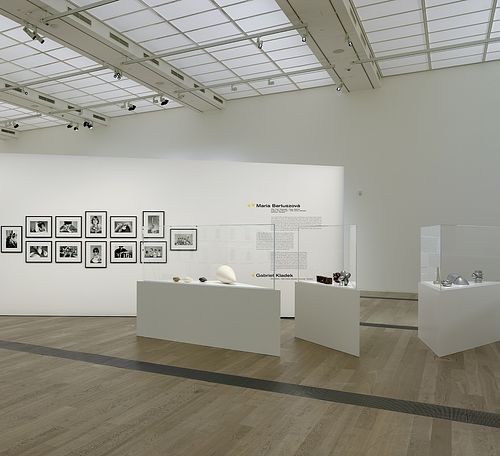AUDIO
Maria Bartuszová & Gabriel Kladek
Who defines how we see, understand and perceive something? These are the questions that photographer Gabriel Kladek was considering when he and the sculptor Maria Bartuszová organised two symposia in 1976 and 1983, which took place at the elementary school for children with visual impairments and blind children in Levoča, in what was then Czechoslovakia. During those events, the children were given the opportunity to experience, feel, embrace and hold Bartuszová’s sculptures.
Bartuszová already began to develop new forms of sculpture in the early 1960s. She created works that were especially accessible through touch. The tactile experience of the sculptures was crucial – whether they felt smooth or rough, angular or rounded, with clearly defined surfaces or marked by holes and indentations. Inspired by shapes and processes from nature, the artist created objects that evoke associations with oversized drops or seeds. She preferred working with materials such as bronze, aluminium, shellac and particularly plaster, whose surface was especially well-suited for creating intricate shapes. The artist was fascinated by the transformation of shapes, by moulding them and creating movement, and by instilling a sense of alienation. Through this, she invites the observer to challenge their own perceptions and start reconsidering: What is the distinction between inside and outside, or between solid and liquid? Where does my body begin, and how stable are its boundaries?
Gabriel Kladek documented the encounters of the children with the works of Maria Bartuszová. His pictures show young people creating their own aesthetic experiences: they touch the sculptures, scan them with their hands, explore them, take them to pieces and reassemble them and, in doing so, become creative themselves.
